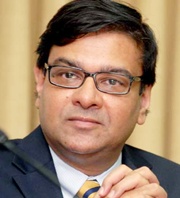Banks' stressed loans increase from 7.8% to 9.1% in March-Sept: RBI
30 Dec 2016
 Banking sector assets continues to face "significant" level of stress as their quality has deteriorated further with the banks' gross non-performing loan increasing to 9.1 per cent in September from 7.8 per cent in March, says the Reserve Bank of India.
Banking sector assets continues to face "significant" level of stress as their quality has deteriorated further with the banks' gross non-performing loan increasing to 9.1 per cent in September from 7.8 per cent in March, says the Reserve Bank of India.
A stress test carried out by the RBI shows that under the baseline scenario, the advances to gross non-performing assets (GNPA) ratio of banks may increase from 9.1 per cent in September to 9.8 per cent by March 2017 and further to 10.1 per cent by March 2018.
"The gross non-performing advances (GNPAs) ratio of scheduled commercial banks (SCBs) increased to 9.1 per cent from 7.8 per cent between March and September 2016, pushing the overall stressed advances ratio to 12.3 per cent from 11.5 per cent," RBI stated in the Financial Stability Report (FSR) released on Thursday.
With significant increase in stressed assets, the banking sector, particularly public sector banks, may continue to be risk-averse in the near future as they focus on cleaning up their balance sheets, the RBI said.
The rise in NPAs has caused an erosion in the capital positions of scheduled commercial banks, making it insufficient to support credit growth, RBI stated in its latest Financial Stability Report.
Overall, the report said, India's financial system remains stable although banks, particularly PSBs, continue to face significant levels of stress.
''While the domestic banking sector continues to face significant levels of stress partly reflecting legacy issues, on balance, enhanced transparency has helped to reinforce the stability of India's financial system,'' RBI governor Urjit Patel said.
The banking stability indicator shows that the risks to the banking sector remained elevated due to continuous deterioration in asset quality, low profitability and liquidity.
''If the macroeconomic conditions deteriorate, the GNPA ratio may increase further under such consequential stress scenarios. However, the system-level capital to risk-weighted assets ratio (CRAR) may remain above the required regulatory minimum,'' the report said.
CRAR is the bank's capital expressed as a percentage of its risk-weighted loan exposures.
The report noted that among the bank groups, public sector banks (PSBs) may continue to register the highest GNPA ratio.
Under the baseline scenario, the PSBs' GNPA ratio may increase from 11.8 per cent in September to 12.5 per cent in March 2017 and 12.9 per cent in March 2018 - or even worse under a 'severe stress' scenario. PSBs may continue to record the lowest CRAR.
In a systemic risk survey, a majority of the respondents felt that demand for credit may increase marginally or remain unchanged over the next three months. A majority also indicated that the quality of credit would remain unchanged.
Patel also said that the demonetisation will impart far-reaching changes. ''It is expected to significantly transform the domestic economy... in terms of greater intermediation, efficiency gains, accountability and transparency through increasing adoption of digital modes of payments, notwithstanding the short-term disruptions... and public hardship,'' he said.
The report said while the demonetisation process affected remittances into the country to some extent, India's current account deficit contracted, showing significant improvement in the external sector.







.webp)














